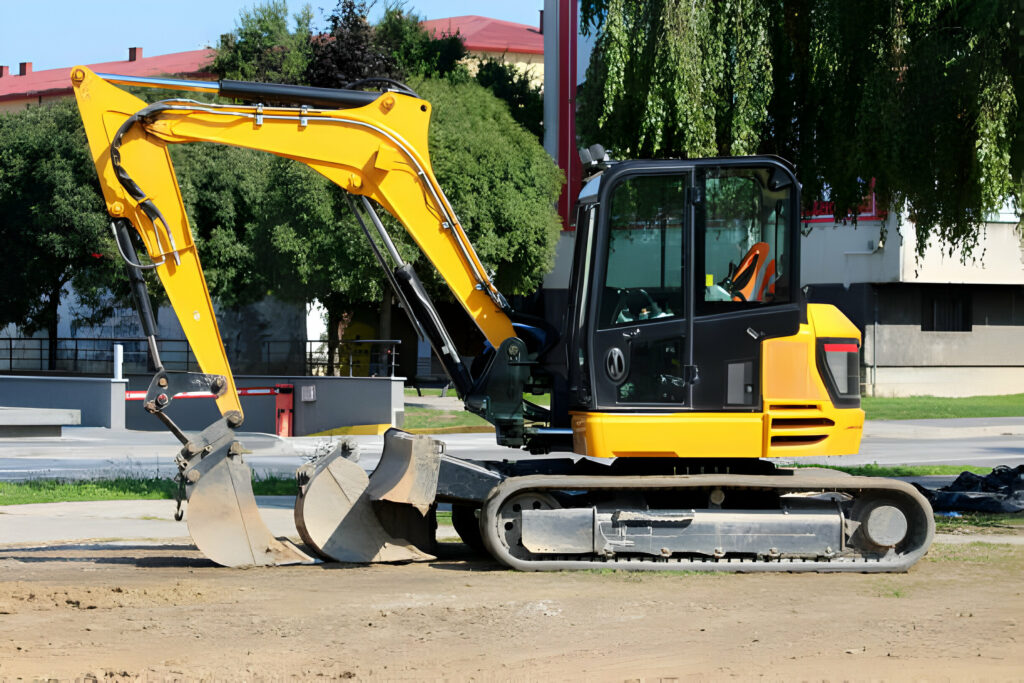Comparing Full-Sized Excavators and Mini Excavators
The construction and landscaping industries have experienced a significant increase in demand over the past few years. This increase has been mirrored by a rising demand for excavators – a vital piece of machinery in these sectors. Regardless of the project’s scale, the importance of an efficient excavator cannot be understated. When embarking on a construction or landscaping project, choosing the right excavator is of paramount importance. This comprehensive guide focuses on equipping you with all the necessary knowledge to make this critical choice, focusing on the comparison between full-sized and mini excavators.
Excavators Explained
Broadly speaking, excavators are heavy construction equipment consisting of a boom, dipper, bucket, and cab on a rotating platform known as the ‘house.’ The house sits atop an undercarriage with tracks or wheels. These are standard terms used by manufacturers and operators in referring to basic parts. Excavators are widely used in numerous tasks including digging of trenches, holes, and foundations, demolition, lifting and placing of heavy items, river dredging, mining, and even landscaping.
Excavators primarily come in two sizes: full-sized and mini or compact excavators. Both types serve in different capacities and unique work settings. The selection involves understanding the type of work, the magnitude of tasks, and the features that adequately support that work’s successful completion.
Full-Sized Excavators: Kingpins of Major Construction Projects
Full-sized excavators, sometimes referred to as heavy equipment, are generally used for larger-scale construction projects. With their ability to dig deep and lift heavy loads, they’re immensely suited to major undertakings where large volumes of soil need to be removed, or heavy items need to be manipulated. However, they require wide spaces to operate due to their size and can be expensive to run in terms of fuel costs and logistical considerations.
Take, a case study in Sydney, where a full-sized excavator was employed successfully in the construction of a multi-story commercial building. The machine’s power and flexibility were invaluable in performing large-scale excavation works and lifting heavy construction materials.
Mini Excavators: Compact Strength for Home and Garden
On the other side of the spectrum are mini excavators. These mini excavator machines provide excellent utility for smaller-scale tasks and in areas where space is somewhat restricted. They’re best suited for tasks such as digging trenches, landscaping, home renovations, and tasks that require a fair deal of finesse and precision.
To illustrate with a domestic renovation project that took place in Melbourne. The home was situated in a close neighbourhood subdivision, so using a full-sized excavator was not an option. In this case, a mini-Digger worked just perfectly to help in the trenching for the home’s expanded electrical system and new landscape features.
Mini Excavators: Small but Mighty

The mini excavators, though smaller than full-sized excavators are versatile machines. They offer increased manoeuvrability and are easier to handle, especially in tight or confined spaces. Mini excavators are well-suited for projects such as landscaping, digging trenches, or small scale excavation. They have smaller footprints than their larger counterparts, making them less likely to cause damage to the surrounding site.
Don’t underestimate the power of these machines. Despite their smaller size, they still pack a punch in strength and can handle a significant amount of digging force. These excavators are just perfect when it comes to tasks requiring precision and accuracy, as they offer better control than full-sized excavators.
Juxtaposition: Full-Sized VS Mini Excavators
When it comes to power, versatility, and capacity to deal with heavy-duty tasks, full-sized excavators reign supreme. They’re ideal for larger projects that require significant digging depth and lifting capacity. However, their size, operational and maintenance cost could be a limitation in terms of budget and space considerations.
Mini excavators on the other hand may lack the immense power of their larger counterparts but excel in smaller projects where space is limited. They come with reduced operational and maintenance costs, easy maneuverability and can work comfortably in locations where size or noise might be prohibitive.
Making the Right Choice: Factors to Consider
Determining the most suited excavator for your project involves considering a handful of factors. These include the nature and size of your project, your budget, and potential limitation or regulation from local authorities. Projects involving tighter spaces, less intensive digging or lifting, and relatively smaller budgets would be better served with a mini excavator. Conversely, projects requiring heavy-duty work and deep digging would significantly benefit from a full-sized excavator.
Land of Opportunity: Excavator Market in Australia
The Australian market is teeming with options for those seeking to hire or purchase either a full-sized or mini excavator. A myriad of companies offer a range of models, with price points varying based on the machine’s size, brand, and age. It’s crucial to do extensive research before choosing a supplier to ensure they adhere to Australia’s strict safety and operational regulations for excavation equipment.
Conclusion
The choice between a full-sized and mini excavator primarily lies in understanding your project’s requirements. With various factors to bear in mind, it’s essential to conduct thorough research and, if possible, seek professional advice. This way, you can optimize results, maintain financial efficiency and avoid unnecessary problems down the line.

